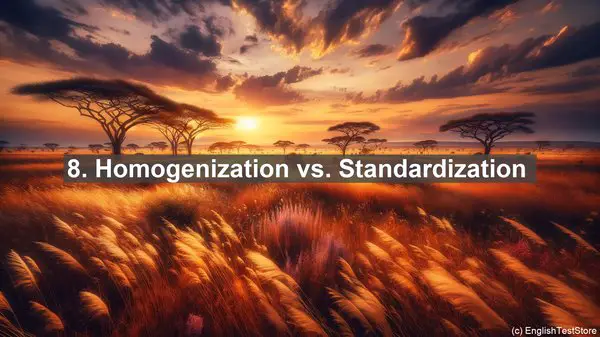Introduction
Welcome to our food science and technology class. Today, we’ll be discussing the top 10 commonly confused words in this field. Understanding these terms is crucial for your future career. So, let’s dive in!
1. Pasteurization vs. Sterilization
Many think that pasteurization and sterilization are the same, but they’re not. Pasteurization is a process that eliminates harmful bacteria, while sterilization completely eradicates all microorganisms. The former is commonly used for milk, while the latter is essential for canned foods.
2. Fermentation vs. Spoilage
Fermentation is a controlled process that enhances the taste, texture, and shelf life of certain foods. On the other hand, spoilage refers to the deterioration of food due to the growth of unwanted microorganisms. While fermentation is desirable, spoilage is not.
3. Emulsion vs. Suspension
Both emulsion and suspension involve the dispersion of one substance in another. However, in an emulsion, the dispersed phase is liquid, like oil in water, while in a suspension, it’s solid, like flour in water. Mayonnaise is a classic example of an emulsion.
4. Oxidation vs. Rancidity
Oxidation is a natural process that occurs when food is exposed to air, resulting in color and flavor changes. Rancidity, on the other hand, is the development of an unpleasant taste and odor in fats and oils. While oxidation can contribute to rancidity, they’re not the same.

5. Conduction vs. Convection
When it comes to heat transfer, conduction occurs through direct contact, like a pan on a stove. Convection, on the other hand, involves the movement of heat through a fluid, like boiling water. Both are important in cooking processes.
6. Enzyme vs. Catalyst
Enzymes and catalysts both speed up chemical reactions. However, enzymes are specific to biological systems, while catalysts can be inorganic. In food science, enzymes play a crucial role in various processes, like the ripening of fruits.
7. Shelf Life vs. Expiration Date
Shelf life refers to the period during which a product can be stored without significant quality deterioration. The expiration date, on the other hand, is the date after which the product is no longer safe to consume. It’s important to differentiate between the two when managing food inventory.

8. Homogenization vs. Standardization
Homogenization is the process of evenly distributing fat globules in milk, ensuring a consistent texture. Standardization, on the other hand, involves adjusting the fat content of milk to a desired level. Both processes are commonly used in the dairy industry.
9. Additive vs. Preservative
Additives are substances added to food to enhance its taste, appearance, or shelf life. Preservatives, on the other hand, specifically aim to prevent spoilage and microbial growth. While all preservatives are additives, not all additives are preservatives.
10. Fortification vs. Enrichment
Fortification and enrichment both involve adding nutrients to food. However, fortification refers to adding nutrients that were not originally present, while enrichment is the addition of nutrients that were lost during processing. This is often done to enhance the nutritional value of the final product.
